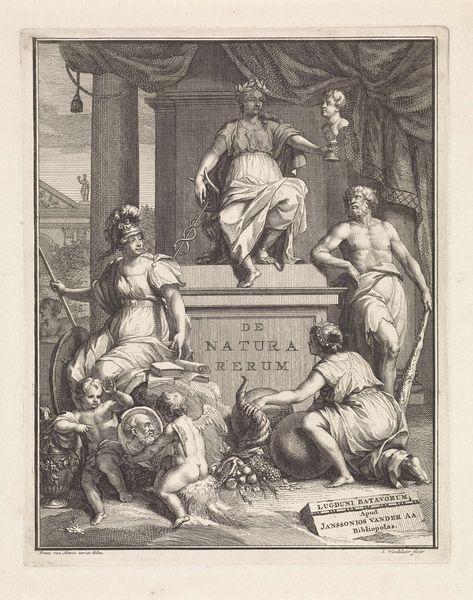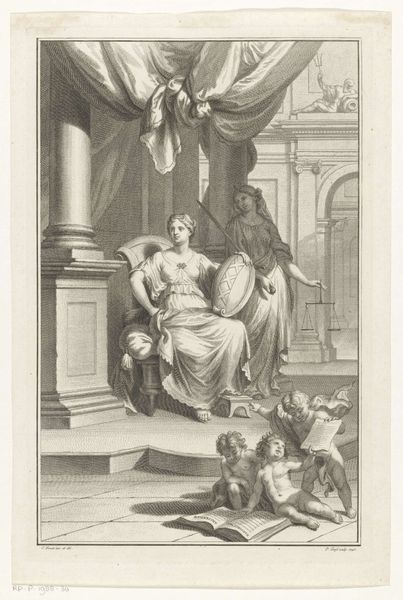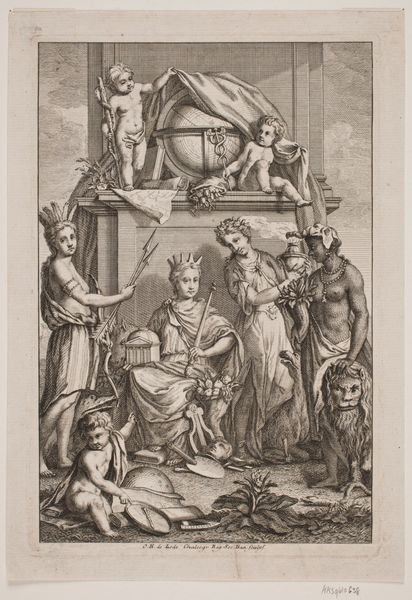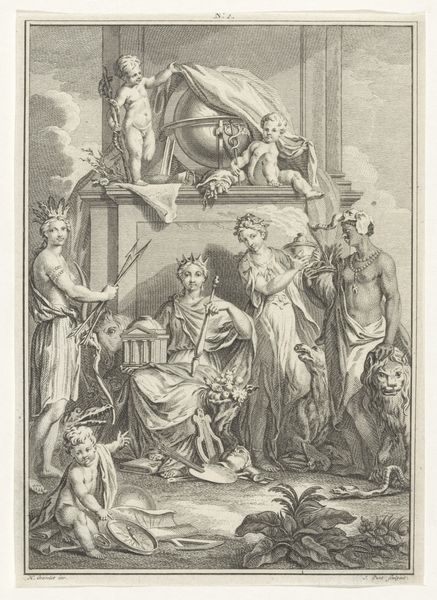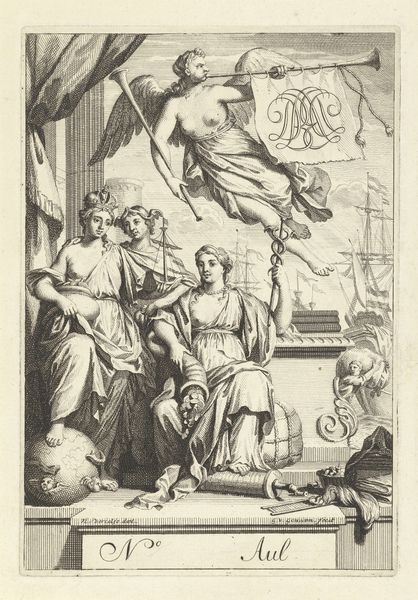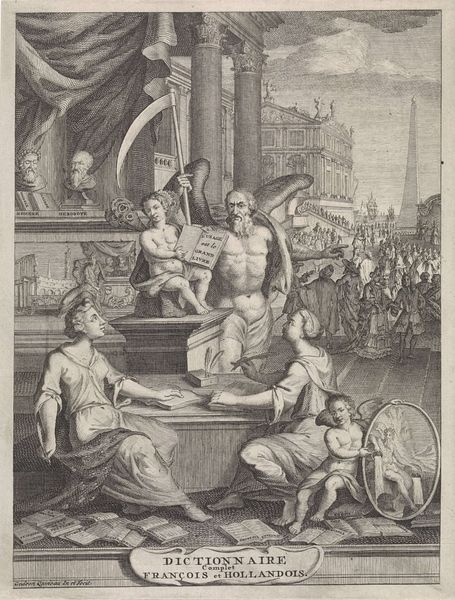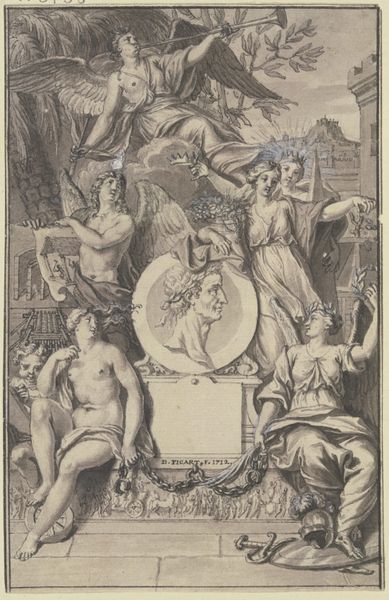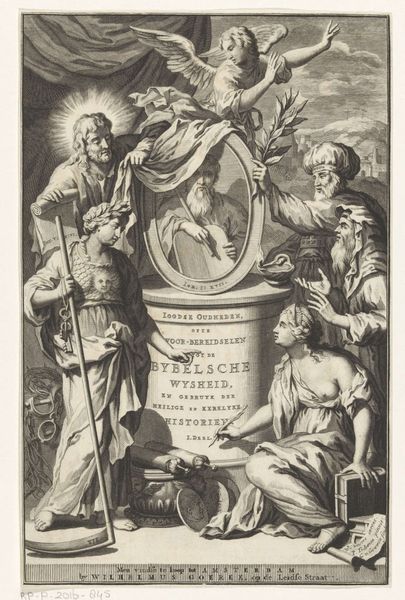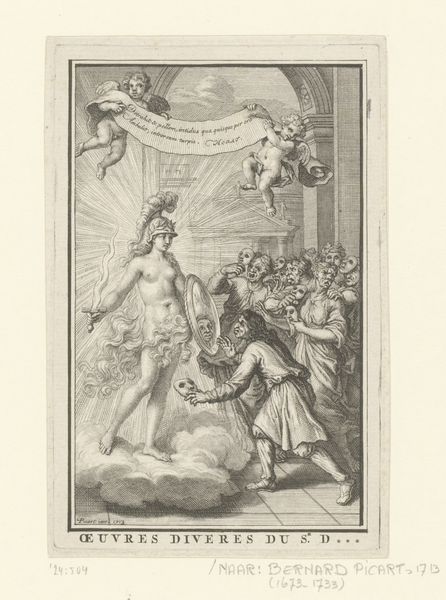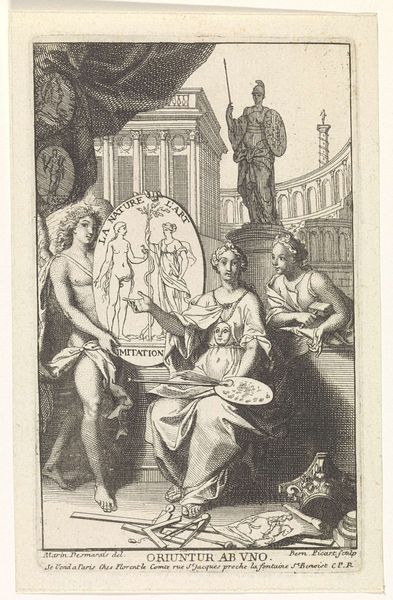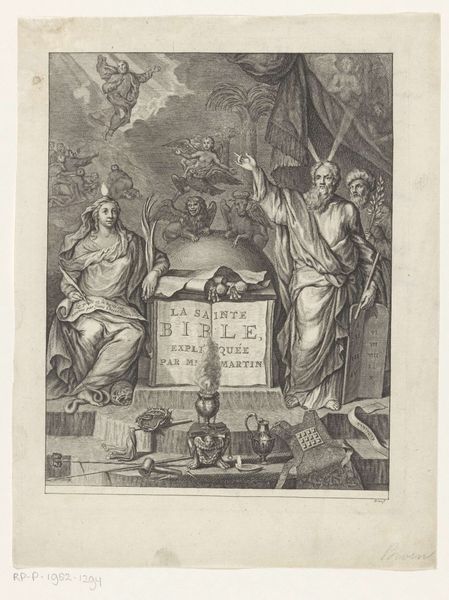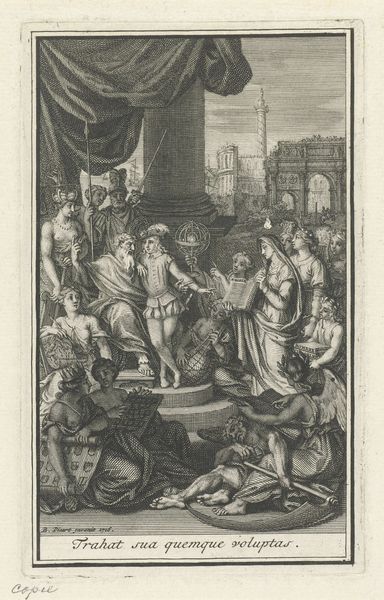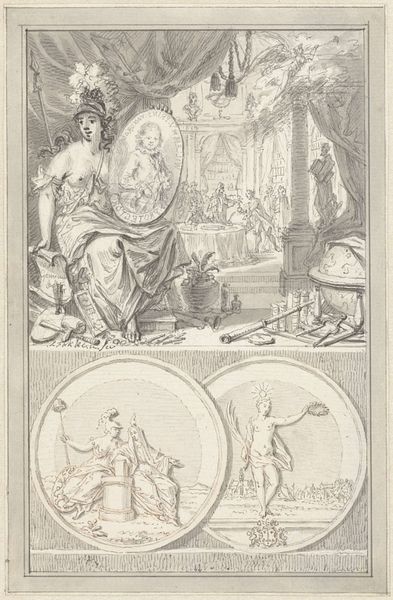
Asclepius omringd door allegorische vrouwenfiguur en figuren met boom en planten 1696
0:00
0:00
engraving
#
portrait
#
allegory
#
baroque
#
old engraving style
#
landscape
#
classical-realism
#
figuration
#
form
#
line
#
history-painting
#
academic-art
#
engraving
Dimensions: height 319 mm, width 197 mm
Copyright: Rijks Museum: Open Domain
This print, made by Jan van Munnickhuysen around the turn of the 18th century, depicts Asclepius, the Greek god of medicine. It's created using etching, a printmaking technique where lines are incised into a metal plate, which is then inked and pressed onto paper. The etcher's skill is evident in the fine lines and detailed shading, which bring depth and texture to the scene. Look at the way the lines vary in thickness and density to create a sense of light and shadow, defining the forms of the figures and the folds of their drapery. The image is rich in symbolism, with Asclepius surrounded by allegorical figures and plants, each representing different aspects of healing and well-being. The choice of etching as a medium is significant. As a relatively accessible printmaking technique, it allowed for the wider dissemination of images and ideas, bringing art and knowledge to a broader audience. It collapses the distinction between artistry and wider social knowledge, highlighting the importance of both in understanding the full meaning of the work.
Comments
No comments
Be the first to comment and join the conversation on the ultimate creative platform.
